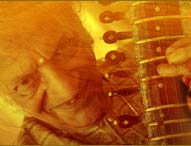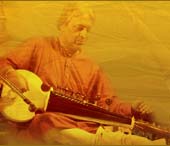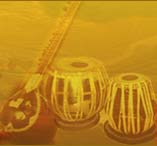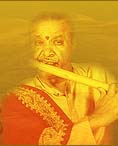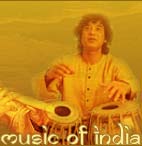Spirituality and devotion define the origin of music in India. Most of the Hindu Gods and Goddesses are associated with music and rhythm, which is often depicted in the act of music making. Even today, the auspicious sound of the Shehnai, filling the atmosphere with a comforting harmony and inspiring concord, can be heard in temples during early mornings. The same follows during the evening prayer and also at weddings as it is said to bring good fortune for the newly wed. The size of the Shehnai ranges from one foot to one and a half feet. Nadaswaram is the South Indian equivalent of Shehnai. By controlling the breath, various tunes can be played on Shehnai. According to the scholars of the Indian music, the present day Shehnai was developed by improving upon the pungi. The production of musical notes is wholly dependent on the manipulation of the fingering technique. A seasoned player uses a combination of lip and tongue-work along with dexterous fingering during recitals.
History
Shehnai is believed to have been introduced in India by the Muslims. One of its most prominent uses was in the ensemble called the naubat (or nahabet), which was played at the courts of the Mughal Emperors. Naubat spread the status of the Shehnai, which came to be regarded as an indispensable part of every celebration of every religion. Slowly, it began to be used during pujas. The Shehnai came to be associated with the temple and thereby was known as `mangalvadya` or an auspicious instrument. While a person belonging to the priestly class blew the Shankh, or the conch, during sacred rituals inside the worship area, Shehnai players, who belonged to the lower caste, played the reed instrument from outside the worship area. No social ceremony such as engagement, marriage, childbirth and the investiture of the sacred thread was complete without the soothing strains of the Shehnai. It was not until the beginning of the 20th century that this instrument was granted the status of a classical instrument.
Description Of The Instrument
Shehnai is made completely of wood except for the metal bell at its enlarged lower end. There are basically two functional parts of Shehnai: the reed and the tube. There are two small reeds held together, leaving small gap between them. The reeds are fixed to the tube of the instrument and the main body of the instrument is the tube which is the resonator. It is conical in shape, narrow near the blowing end and opening out gradually. Usually, there is metallic 'bell' at the farther end. The tube is usually of wood, but may be of metal also. It has a total of seven playing holes and one or two more for adjusting the pitch. One plays the Shehnai by controlling the flow of air through the column (though with a different technique), and obtains desired pitches by partially or completely covering the holes. The accompanying drone (sruti or sur) is provided by a fellow reed instrument, which looks like the Shehnai but has only two or three holes. These are stopped wholly or partially with wax so that the player can tune the drone to the desired pitch.
Occasions
The sound of Shehnai creates and maintains a sense of auspiciousness and sanctity and, as a result, is widely used during marriages, processions, and in temples of West India. Shehnai plays one of the most important parts of any Indian wedding music, parties and welcome occasions etc., be it for a Bengali, Rajasthani, Gujarati or Punjabi wedding. The music of Shehnai adds a special charm to a marriage ceremony with its tune heightening the mood of the celebration.
Famous Shehnai Players
The contributions made by players such as Chhote Khan, Gaurishankar and Nandlal, who was Chhote Khan's disciple, belonging to Benaras, to elevate the Shehnai to the level of a concert instrument has been immense. More than anyone, it is Ustad Bismillah Khan who was solely responsible for popularizing the Shehnai as a concert instrument, both nationally and internationally.
